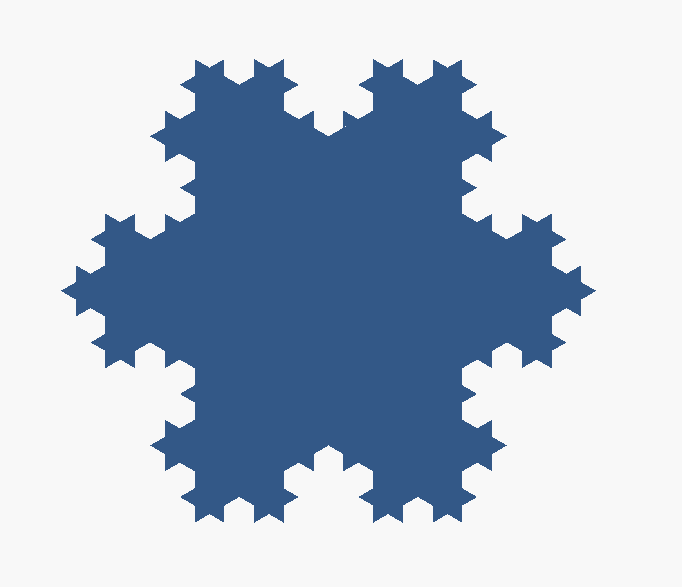
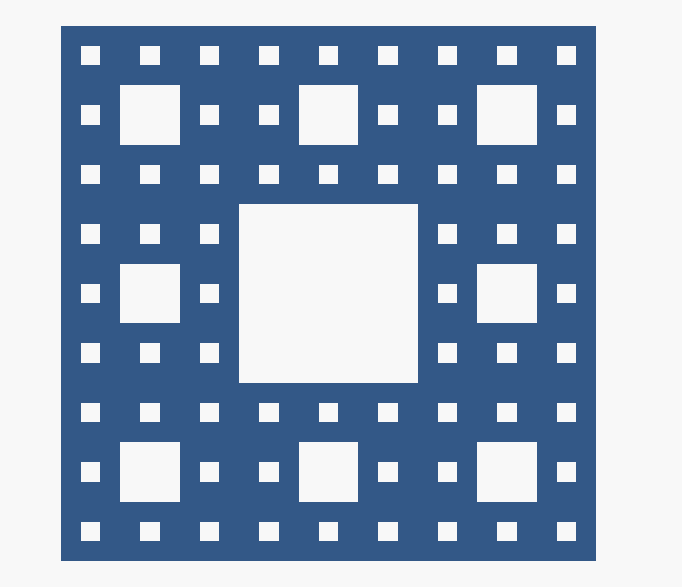
I’m trying to imagine a solid. From the front, it looks like a Koch snowflake. From the top, it looks like a Sierpinski carpet. How might it look from the side? How would it feel? Is it even possible?
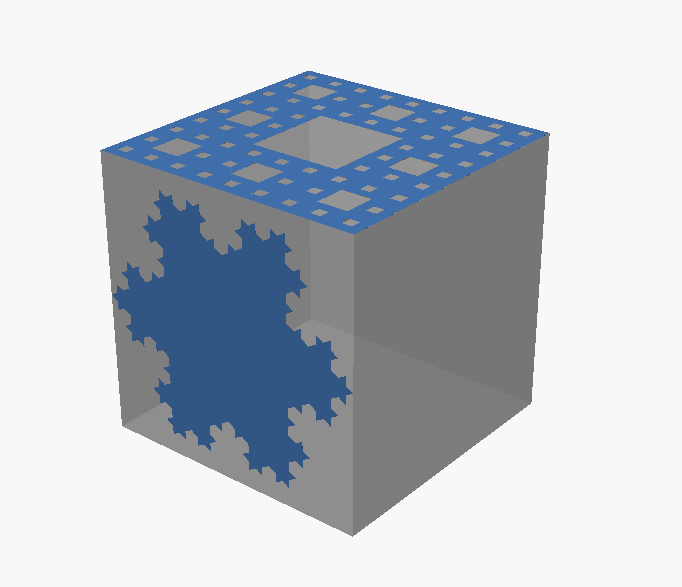
Thanks to the power of OpenSCAD and the magic of 3D printing, I can find out.
OpenSCAD is a programming language that generates 3D models. It has a nifty command called Intersection that, appropriately enough, finds the intersection of two or more objects – all the bits that are in both objects. So I can generate a prism with a Koch snowflake cross section, another with a Sierpinski carpet cross section, put them perpendicular to each other…
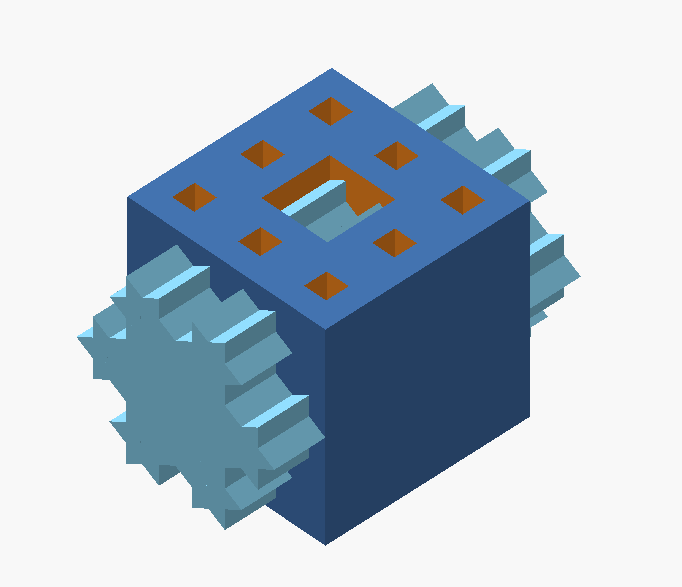
…and take the intersection. Hey presto! This is what I get.
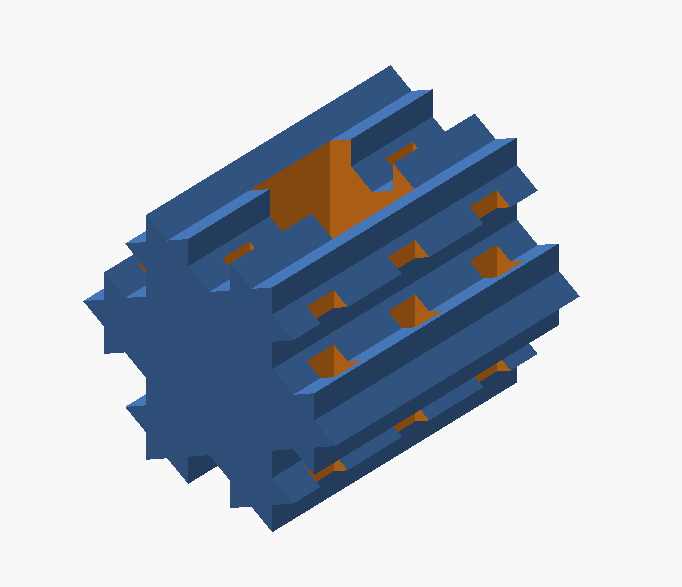
Now I can find out how it looks from the side.
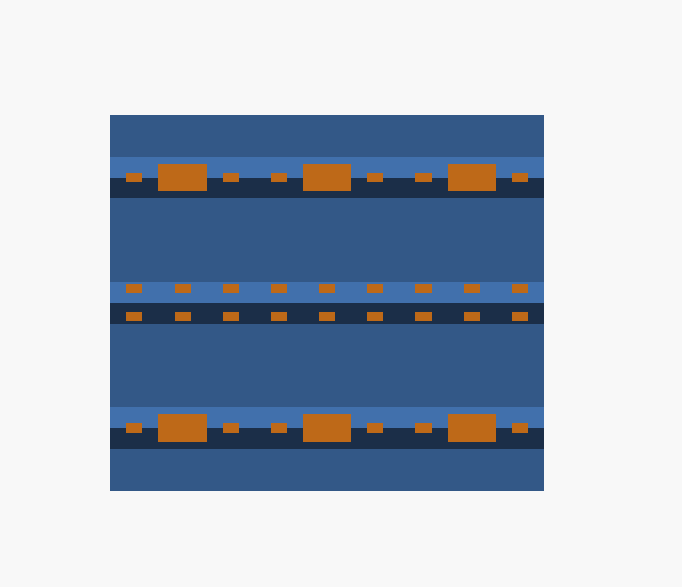
It’s…a rectangle. Somewhat disappointing. Can I make it into something more interesting?
There are any number of options for the side profile, but there are a few requirements it has to meet to avoid cuttting off parts of the snowflake and carpet. It has to fit inside the rectangle. It has to touch all four edges of the rectangle. Let’s try an ellipse.
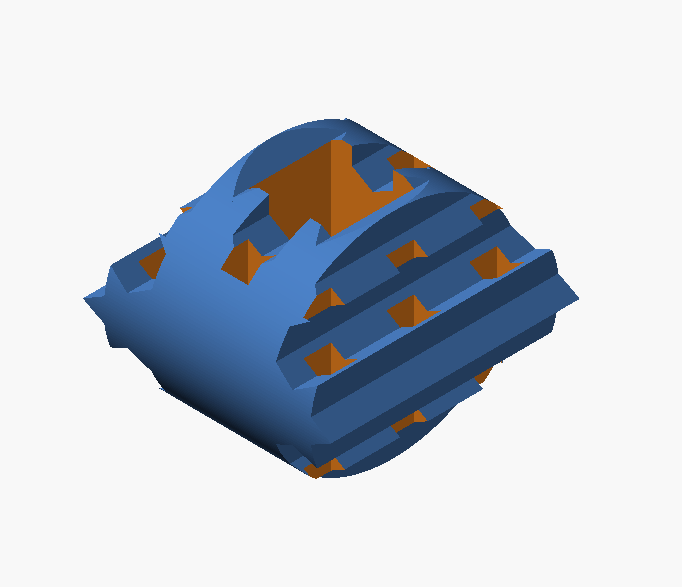
These are the profiles from side, top and front. It’s almost there, but look carefully at the snowflake profile.
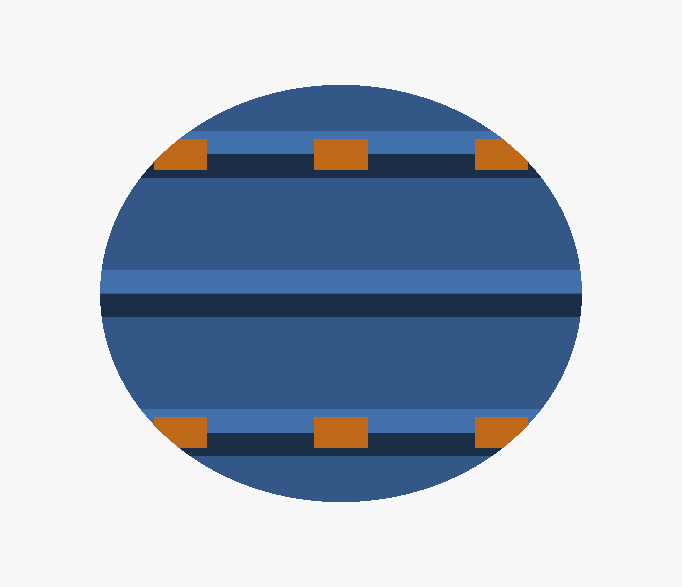
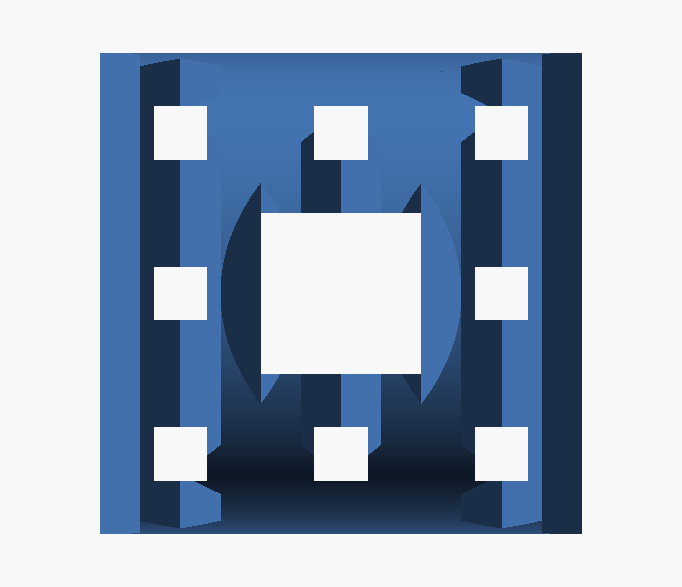
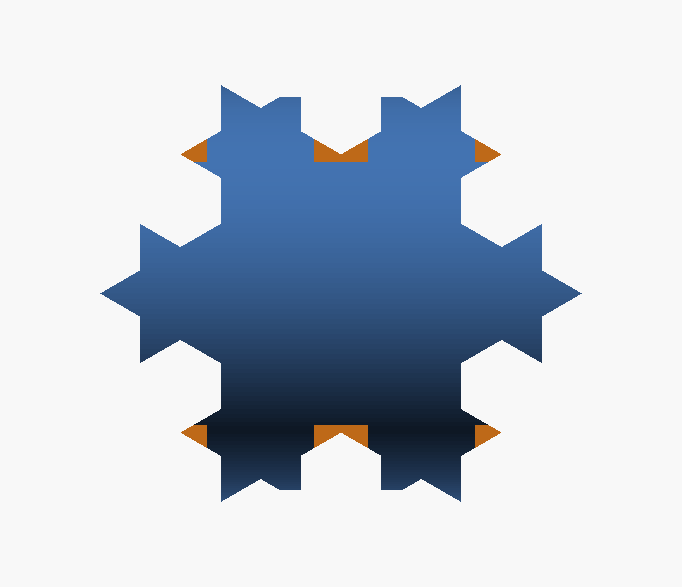
Some of the points have had their ends chopped off.
I’m not going to pretend that I have a foolproof method to find a shape that will work for the side profile. Apart from the requirements I already mentioned, all I have at the moment is trial and error. Happily, I’ve found a shape that I can use without losing any of the top or front – the good old hexagon. Meet the carpeted hexaflake!
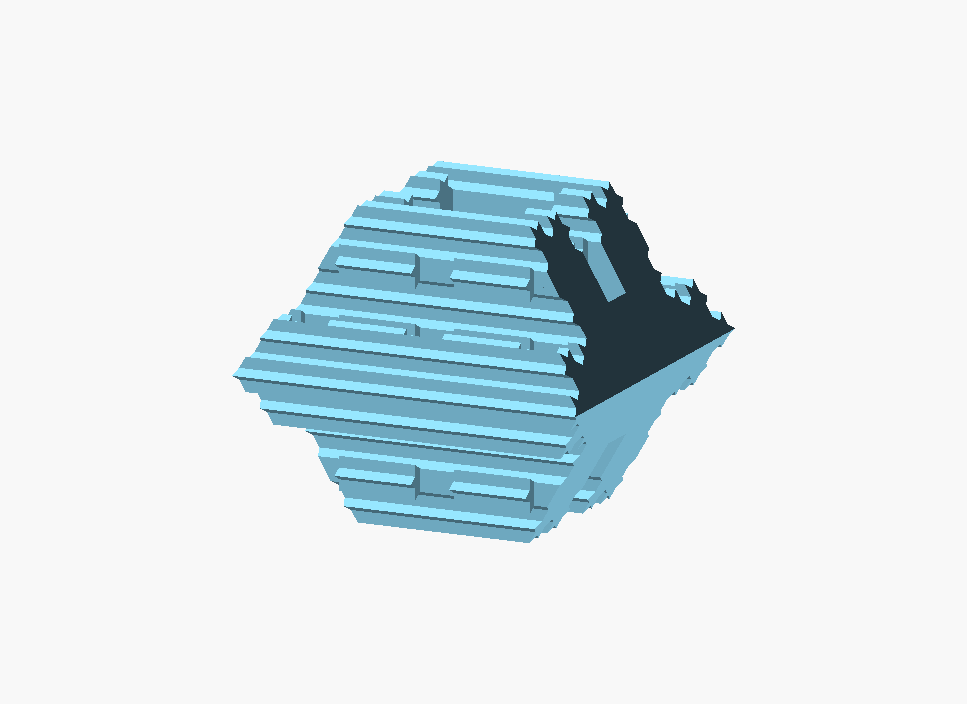
And here it is in person.
The OpenSCAD code and STL files to print from are available on GitHub. I encourage you to play around with it and see what interesting shapes you can come up with.

Leave a Reply